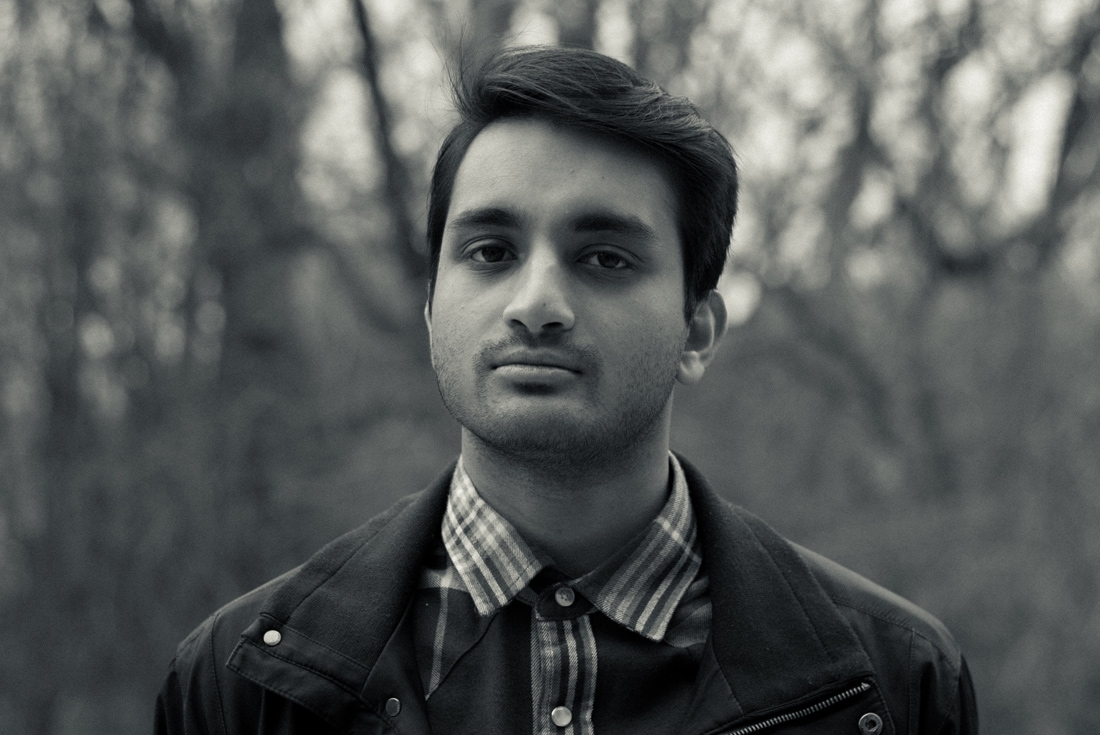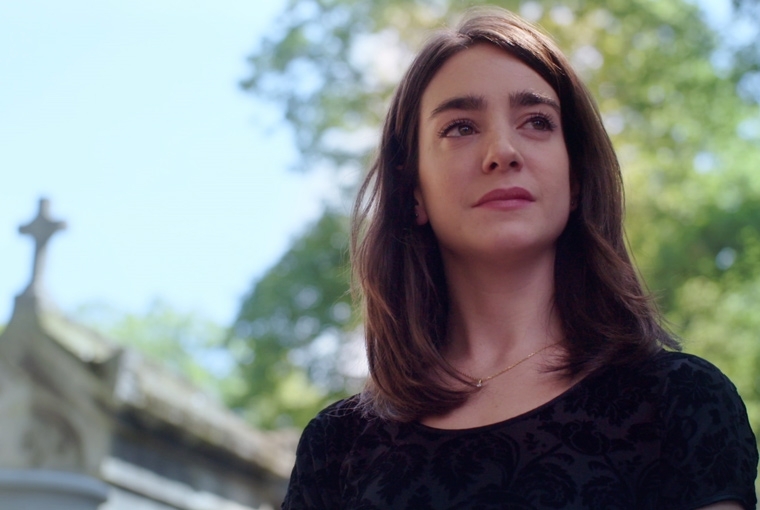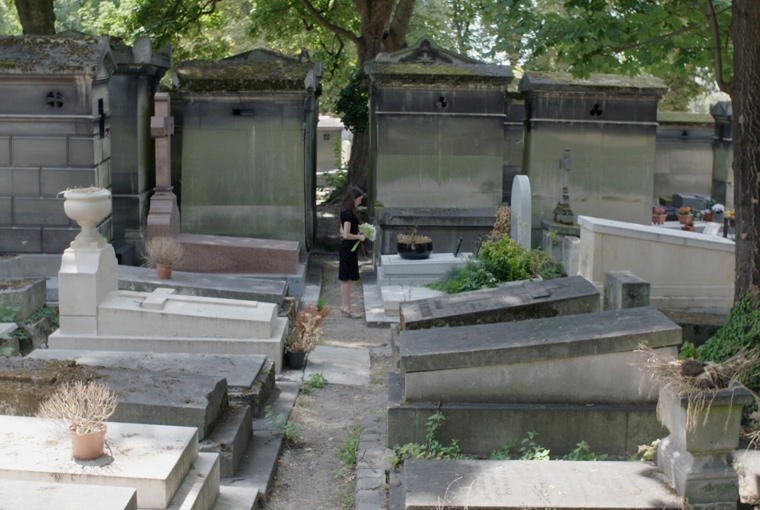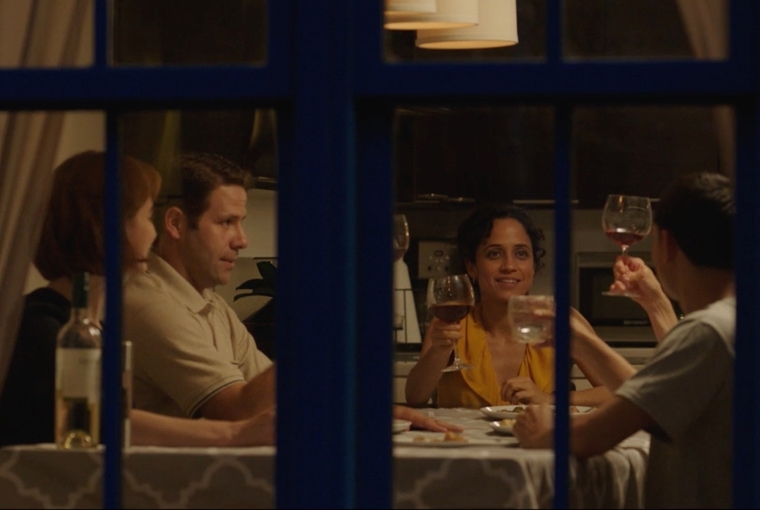

A recent graduate from Tisch School of the Arts in New York, Sachin had found his calling quite early on. With a growing interest in stories and how they are translated into a film, Sachin made his first short film when he was sixteen. Since then, there was no stopping him. Cut to today, his award-winning short film Breathe In Breathe Out won him a spot amongst the fifteen winners of the Sundance Ignite ‘What’s Next’ Challenge for young filmmakers. ‘As a kid I was variously interested in drawing, acting, photography, music, technology, and writing, and for about eight years competitive basketball was a huge part of my life. Once I finally made a narrative short film at the age of sixteen, my love for all those activities drew me into the filmmaking process because it features elements associated with all of them (even basketball, because production can be like a team sport that requires enormous stamina). Combined with my lifelong hobby of watching movies, the realization that everything I love could be found in one place — in one complex, constantly evolving process — hooked me, and I haven’t moved since. When I was younger, I would often throw myself into something new but then eventually lose interest, but that would never happen with film, I think. There’s just so much to chew on,’ says Sachin.
Relationships, friendship, love and loyalty are key undertones in Sachin’s work. The narratives, the frames and the fierce emotions that run through them hint at a subtle maturity far beyond his years. Somewhere at the core of his stories lies a simple idea – that of people taking control over their lives. Breathe In Breathe Out traces the story of a young girl reeling under the loss of a loved one, and the day she decides its time to move on. Just shy of five minutes, the short pulls you into the story, gets you hooked and leaves you guessing. Happy, melancholic, and hypnotic, it switches pace and emotions with a deft dexterity – a simple story, simply told. I connect with Sachin across time zones, and he lets me in on the nuances that shaped his love for film, his journey so far, and the short that won him a year-long fellowship at Sundance Institute.
Tell us a little about yourself.
I was born in 1994 in Oklahoma City, Oklahoma and grew up in Madison, Wisconsin. After graduating from the Film & Television program at NYU’s Tisch School of the Arts, I chose to stay in New York, where I’m now working part-time as a director, shooter, and editor for The Broadway Channel — which broadly covers commercial theatre in Manhattan and around the country — while pursuing freelance projects, editing my thesis film The Alternative, and applying for grants and fellowships.

A still from Breathe In Breathe Out
Did your childhood and your family contribute to your journey as a filmmaker?
My dad’s side of the family includes the Jaywant line of actors, so Kajol is my cousin twice removed. I think knowing that from an early age gave me a natural curiosity about film, even if my love for making movies didn’t emerge until midway through high school. I haven’t yet had the pleasure of meeting Kajol, but I would love to someday — maybe we could even work together?
Growing up in an academic household meant that there was always a collective interest in film. When I was little my folks and I watched everything from the usual Disney animated fare to Bollywood and arthouse. The first movie I can remember that expanded my mind was Tom Tykwer’s Run Lola Run, which I watched at home with my parents a couple years after it came out. I couldn’t have been older than four or five, but that marked the first time I really saw what a film could do, even if I didn’t realize it at the time. I also had a weird phase in kindergarten where I would watch a VHS tape of Titanic every day after school. I’ve grown out of that, I think.
My family and I usually spent summers in India every two years, and that probably had the most profound impact on me as a filmmaker and person just because of how much it diversified my experience. My mom’s parents used to live in Rajasthan, and those hot Jaipur days in July are forever seared into my memory. My dad’s family originally hails from Goa, but both extended clans are mainly based around Delhi, and my maternal grandparents now live in Pune. I spent a year in Delhi when I was thirteen, during which I attended Modern School, Barakhamba Road. That feeling of culture shock within a school setting was scary and thrilling all at once, and I’m still friends with some people from my time there. Between a family focused on the humanities and having the privilege to travel often, I’d say both things definitely shaped my filmmaking.
Take me through your journey in film.
When I was in tenth grade, my English teacher taught a film unit. We watched some classics, wrote a paper, and had the opportunity to make a short film for extra credit. This was a couple years into my phase of a deeper interest in film-watching, after I had started making my way through the work of canonized directors and identified Terrence Malick as the filmmaker who, at the time, inspired me the most. As a result, I had been itching to make a film for a while, and finally, with this extra credit project, I had a tangible excuse to try. A few weeks later, over three days, a friend and I shot That Obscure Object of Desire — a comedy about a practical joke gone too far, whose title I inexplicably and pretentiously lifted from a Luis Buñuel film I had never seen — in my house. A few weeks after that, the film screened at my high school’s recently resurrected film festival, where it took the Best Narrative award. That period of time, in which I wrote a film, shot and directed a film, and screened a film for an audience who laughed when I hoped they would laugh, was profoundly affecting in a way I had never experienced. At that age I had never tried drugs, but I felt completely high.

A still from Breathe In Breathe Out
So I continued to get my fix. Next came Uncommon Sense in 2012, a feeble, spectacularly immature attempt at a satire of hard-partying high schoolers, followed by In a Special Place in 2013, a romance that was my submission to film schools and which gave me my first festival experience. During my time at NYU I made many new films — including a series of five shorts all loosely based on Greek mythology — while also exploring documentaries, commercials, and music videos as creative outlets. I also crewed on dozens of projects, developing a wealth of production experience as an Assistant Director. My most recent narrative project, The Alternative, is the first short I’ve directed with a sizable budget and mostly professional actors.
This year will be vital. I’m lucky enough to have consistent work at The Broadway Channel, but while I have that backbone I think it would be wise to take big risks. I’m actively pursuing freelance work as a director of any and all short video content while focusing on writing new, long-form material in my free time. I spent so much time developing the script for The Alternative — nearly two years — that I felt my approach to film changing significantly while I remained stuck on one story that had to be done a certain way. After wrapping production on that project, I finally have an opportunity to explore new ideas. So today, I’m just trying to make a living while reengaging with my creative side.
If there is one integral thing you learnt about filmmaking during your time at the Tisch School of the Arts, what would it be?
That there are no rules, except to follow your own path. Many professors there teach theories about 'formulas' and What Makes a Good Movie Good, but for every example that favors that approach are ten others that challenge it. (My favorite teachers were often the ones who acknowledged these frameworks but encouraged us to run free if we wanted.) The most valuable conclusion I drew at Tisch was that you can’t look at other people and think, 'Shit, this person’s doing this, and I’m not doing the same thing.' Filmmaking, any art for that matter, isn’t medical school: there’s no standardized progression of steps. You just have to do what interests you, because that gives you the best chance of creating things that are genuinely inspired. Everything grows out of that.
One film that left an indelible effect on you?
Abbas Kiarostami’s Close-Up. Neither fiction nor documentary, the late Iranian filmmaker’s 1990 masterpiece recreates a real-life news story involving a poor Tehran man (Hossain Sabzian) who manipulates a wealthy family into thinking he’s a famous filmmaker (Mohsen Makhmalbaf) whom they admire. But the crucial, transcendent element of Close-Up is the fact that Kiarostami somehow got the same people who did these things in real life to act in his recreation. So on one level, not only do we have a compelling, often funny story about the lengths people will go to fleetingly experience a life supposedly 'better' than their own, but we also get to see the original participants coming to grips with past actions as they play their way through a script based on their own lives. You can see it on all their faces, buried just one or two layers beneath their performances, which aren’t really performances to begin with. What’s more, Kiarostami intercuts the recreations with footage from Sabzian’s trial — the family charged him with fraud — and thus creates a wholly unique tension between truth and fiction that keeps the viewer in a constant state of flux. The world lost one of its greatest artists when Kiarostami died last July, but works like Close-Up, which features cinema at its most inventive, probing, and deeply human, will ensure that he lives forever.

A still from The Alternative
What inspired your short film Breathe In Breathe Out? How did you come up with the narrative and the characters?
I made Breathe In Breathe Out while studying experimental film in Paris through NYU, and before writing the script, I knew I wanted to take advantage of the location and shoot something I couldn’t shoot anywhere else. The project grew out of a single idea that compelled me: intermittent images of a girl sitting in a dark room and looking straight into the camera. (I have an ongoing obsession with breaking the fourth wall, and here I was again.) For a couple weeks I thought of ways to build a short piece around that image, and since I had recently done those Greek mythology projects, I wasn’t afraid to think in metaphysical terms. I start every film by scribbling in a notebook so I can flesh out narratives by hand, and in the end I settled on the story of a girl whose boyfriend died in the army but whom she still 'sees' and 'interacts' with. The film could be taken literally — that the man she goes out with and speaks to at the cemetery is a ghost — or as a metaphor for someone’s thought process as they finally rid themselves of grief. I cast two wonderful local actors, Justine Mallier–Giraud and Florent Chako (the former generously translated my three-page English script), and although Paris doesn’t show up much in the film I feel that the atmosphere is distinctly French. The final scene in the cemetery takes place at Père Lachaise, the famous burial site of people like Jim Morrison, Édith Piaf, and Oscar Wilde, among many others. It was a privilege to shoot there.
What was the most challenging thing about making this short?
Making a film abroad was a challenge. I studied French in middle and high school but was nowhere near good enough at the language to write and direct a French movie, so I wrote the script in English with the hopes that I could get the dialogue translated, which, as we know, worked out fine. Finding the actors wasn’t easy either, since I knew no one in the city but my classmates, and I had to rely on both coincidence and the Internet to cast Justine and Florent just barely in time for production. (Don’t even get me started on the permits, especially the one we needed for Père Lachaise.) But my crew and I all overcame these hurdles because we knew it was an adventure to begin with, with a production footprint small enough to be flexible. Because in the end, if all you need is a camera, a couple helping hands, and great actors, you’re set. Breathe In Breathe Out required nothing more. NYU gave me equipment and production insurance plus 500 Euros to make the film, and I only used half of it.
Tell us about your narrative short The Alternative. How did the project come together?
When I was in Pune during the summer of 2014 visiting my grandparents, there was a tense situation involving a domestic helper who was possibly embezzling money. My Nani and Nana had conflicting positions on the matter, as did my parents, giving the dilemma a classically dramatic ring. Themes of class, family, and trust were built in, and since at the time I was looking for a new story to tell, I decided to consider the circumstances as a blueprint for something I’d be able to make.
By the end of the summer I had a rough outline for The Alternative, the story of Valentina Moreno, a housekeeper who hatches a madcap plan to save her relationship with her employers when something from her past emerges uninvited. Valentina is a Puerto Rican immigrant with a teenage son named Santiago, and their relationship, the focal point of the narrative, comes under strain when Valentina enlists his help to pull off her scheme.
Once I had a first draft of over twenty pages, I realized that The Alternative would be perfect for my NYU thesis film, even though that was at least two years away. So I continued to develop the script over a long period of time, while recruiting key crew members early on — like my cinematographer, Sam Wolff — so we could give the project a beneficially slow gestation period. While writing and revising, I kept pushing a tone that felt like a mixture of Pedro Almodovar’s colorful, female-centric melodramas (All About My Mother, Talk to Her) and Shakespeare’s comedy Much Ado About Nothing. My thesis professor eventually described it as 'screwball dramedy,' which felt right on the money. The long development period also gave me the opportunity to spend a lot of energy on casting, which for me is the most important thing about directing fiction. I chased a TV star for months but then met the amazing Aris Mejias, and after one meeting I knew she had to play Valentina. The rest of the principal cast — Joshua Rivera, Cherie Mendez, Jesse Teeters, Audrey Corsa, and Dalia Davi — were found through a combination of knowing them personally and open auditions.
After a tumultuous but successful seven-day shoot last May, The Alternative is in the can and edited for picture. A talented sound guy named David Britton will be mixing and designing the soundscape, while the Mumbai-based composer Atif Afzal (Prague, Baji) has signed on to score.
What is at the core of your filmmaking?
For me, everything comes down to people, behavior, and the possibility of arriving at beauty through a combination of the two.
As a storyteller, what themes do you find yourself gravitating towards?
I like to try something new with each film, but generally speaking, I’d say that I gravitate toward a theme of people taking control of their lives. That idea can host a broad spectrum of sub-themes, though, and right now I’m just eager to explore as many themes as possible. The Alternative is a very political film — or at least tries to be — and given recent events in the United States that’s a subject I’d like to continue surveying. I’m also interested to see how the role of film in politics can evolve.
Does your relationship with India inform your work in any way?
As I mentioned earlier, traveling to India has had a huge effect on me and my experiences there have doubtless shaped the way I think and work. But last time I went, in 2014, was only the first time I made a film in India (a small experimental essay called Parivar). I hope that I can engage my relationship with India more in future work. My mom’s brother, Anurag Bhargava, was a founding member of the community health organization Jan Swasthya Sahyog (J.S.S.), and he’s now doing fundamental research on tuberculosis and nutrition. I’d like to build a documentary around the work Anu Mama and J.S.S. have done, since that vantage point and subject matter are things we rarely hear about. And yes, of course I would love to do a Bollywood-style movie musical someday. One Indian filmmaker whom I respect enormously — besides his holiness Satyajit Ray, of course — is Mira Nair, because she’s managed to make films in both India and America on a consistent basis. I hope I can replicate that.
Are there any projects in the pipeline? Is a feature film shaping up sometime in the future?
There are a few. I wrote a pilot for an eight-episode miniseries called The Prince of Hyde Park, about a famous high school basketball star who goes missing in Chicago during the winter of 1994. I’m a massive proponent of what we in the U.S. have started calling 'Peak TV' — the high-volume production of outstanding, diverse series distributed both via traditional broadcast and digital platforms — and in addition to independent feature films I would love to work in this sector. The Prince of Hyde Park is my crack at that. Aside from that, I’m working on a feature script called Look at Us, a family drama with a big, risky twist. It’s really early in the process, but I’m designing the movie as something I’d feel comfortable shooting within five years if the opportunity arose. There’s also one short film I’d like to do in the next year or two: Out of Nowhere, which follows a young man who gets physically assaulted by a stranger on the street for reasons unknown.
All of these ideas started swirling around after I finished shooting The Alternative, which further demonstrates how that project boxed me in for so long. That’s how it usually happens: I’m a poor multitasker, so whatever I’m working on at a given moment is the only thing that gets full attention. Now that my goal is to generate new material, everything else plays second fiddle. I feel free.
Take a look at Sachin's work here.
Text Ritupriya Basu